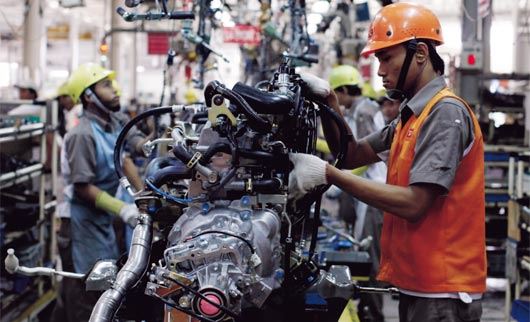SINTEF has recently developed an analytical tool that “diagnoses” how teams function in manufacturing companies. This has attracted the interest of Japan’s Advanced Industrial Science and Technology (AIST) research institute, which is owned by Toyota. The institute will use the method as a part of its development programme for small and medium-sized industrial companies in Japan.
Influence vs. standardization
While Norwegians have aimed at organizing manufacturing teams in such a way as to ensure that employees have a large degree of control and influence, the Japanese have traditionally organized their teams according to pure efficiency criteria – known as “lean production”.
The main principle involved is to ensure that the manufacturing process operates continuously without the unnecessary stock-piling of stores of semi-manufactured parts. This places heavy demands on logistics, standardization and the ability to restructure production rapidly to match changes in demand.
Studies of companies that employ lean production techniques in Europe and the USA suggest that the consequences for employees in terms of self-management, stress and the work environment are mixed.
The background for the Japanese interest in the Norwegian analytical methodology is that the streamlined production method is beginning to show cracks. The financial crisis has meant that the special Japanese system of “life-long employment” is on its way out.
Analysing teamwork
The SINTEF researchers have developed their analytical methods by comparing how teams are organized in a wide range of manufacturing companies. Both traditional Norwegian “self-controlled” teams and Japanese-inspired “lean teams” formed part of the study. The observations were systematized and characterized along eight dimensions that describe teamwork.
“Among other things, the method describes the competence of the workers, the team’s degree of self-control, how the team leader is chosen and the freedom of individuals,” says SINTEF scientist Morten Hatling.
Christina Benjaminsen

